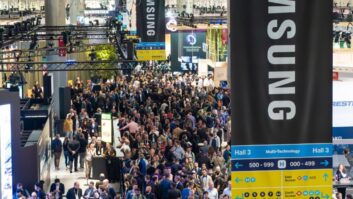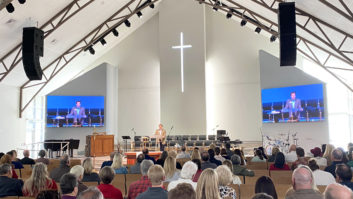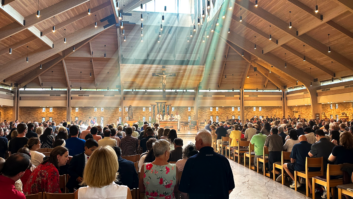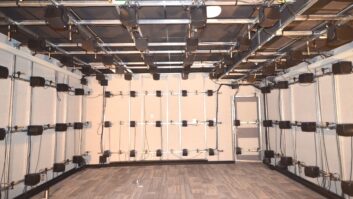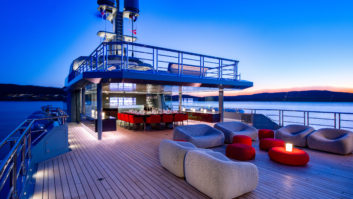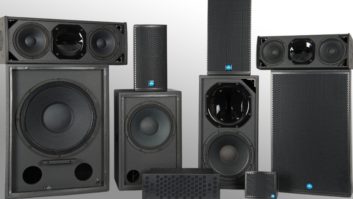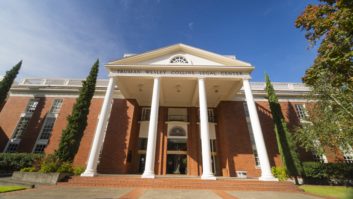Simon Fraser University (SFU), consistently ranked among Canada’s top research institutions, has established an advanced acoustics lab equipped with 128 Renkus-Heinz C Series loudspeakers to support its innovative research in the field of immersive communication and spatial acoustics. A grant allowed the installation at SFU, which is located across British Columbia’s three largest cities, Burnaby, Surrey, and Vancouver.
SFU’s drive to leverage technology for societal benefit led to the recent creation of the new lab focused on 3D multimedia applications, including surround sound, video, and spatial acoustics, commonly referred to as “immersive communication”.
 Senior professor Rodney Vaughan spearheaded the project and partnered with TiMax, Advanced Audio, DirectOut, Innosonix Technologies, and Renkus-Heinz to bring his vision to life.
Senior professor Rodney Vaughan spearheaded the project and partnered with TiMax, Advanced Audio, DirectOut, Innosonix Technologies, and Renkus-Heinz to bring his vision to life.
The lab, now a reality, is centred around two TiMax spatial processors, which were selected for their spatial functionality and flexibility. This technology is vital for the range of experiments planned in the lab, such as simulating complex sound fields and testing noise-cancelling concepts.
In addition to the 128 Renkus-Heinz CX41 speakers, 128 Advanced Audio microphones were installed, all integrated via a Dante network to allow for communication between components.
The Renkus-Heinz CX41 four-inch coaxial two-way loudspeakers were selected because of their compact size as well as sonic performance. Featuring extended-range soft-dome tweeters, they are designed to deliver smooth, low-distortion sound, capable of reaching frequencies beyond 20 kHz.
Renkus-Heinz’s Complex Conic Horn technology also played a pivotal role in ensuring consistent coverage throughout the lab. It is designed to provide constant beam width over a wide frequency range, eliminating typical horn-related issues like polar pattern distortion.
While the project took several years to secure funding, the grant ultimately came through, and Vaughan and Tim Bartoo, TiMax senior developer, began assembling a team to execute the ambitious vision.
Fred Gilpin, a prominent acoustic consultant, was brought in early to help design the physical setup of the lab. “Fred handled the precision of the speaker placement,” Bartoo explained. “We have about five miles of custom cabling in that room. His attention to detail was critical because every microphone and speaker needed to be precisely located to ensure accurate sound replication.”
As the lab neared completion, the team was eager to put the space to use. Vaughan explained: “One of the most exciting projects we’re working toward is creating a sound-cancelled room. Imagine a corner of the room where two people can have a conversation, and no one outside that space can hear it, thanks to acoustic isolation. Or a space where you hear nothing, even in a noisy environment. This kind of innovation hasn’t been done before.”
Another area of interest for the lab is enhancing room acoustics, particularly in overly reflective environments. By using advanced modelling and soundfield control, researchers hope to develop systems that analyse a room’s acoustics and compensate for excessive reverberation, improving intelligibility and sound quality in challenging spaces.
Beyond these groundbreaking research projects, Bartoo is particularly excited about testing TiMax’s new reverberation subsystem in the lab. He said: “We’ve incorporated four reverb engines that can create dynamic, localised reverberation in different parts of the room. With the lab’s configuration, we can simulate anything from a cavernous cathedral to a tight, controlled acoustic space. It’s going to be fascinating to see how well these reverberation patterns replicate reality in such a controlled environment.”
The lab has already drawn significant interest from the academic and research communities, with numerous proposed projects on the horizon.
Bartoo added: “We recently completed our first 128-channel recording. We walked around the room, talking and clapping, and when we played it back, you could pinpoint exactly where the sounds were coming from. When you closed your eyes, you could visualise who was where in the room. It’s pretty neat.”
